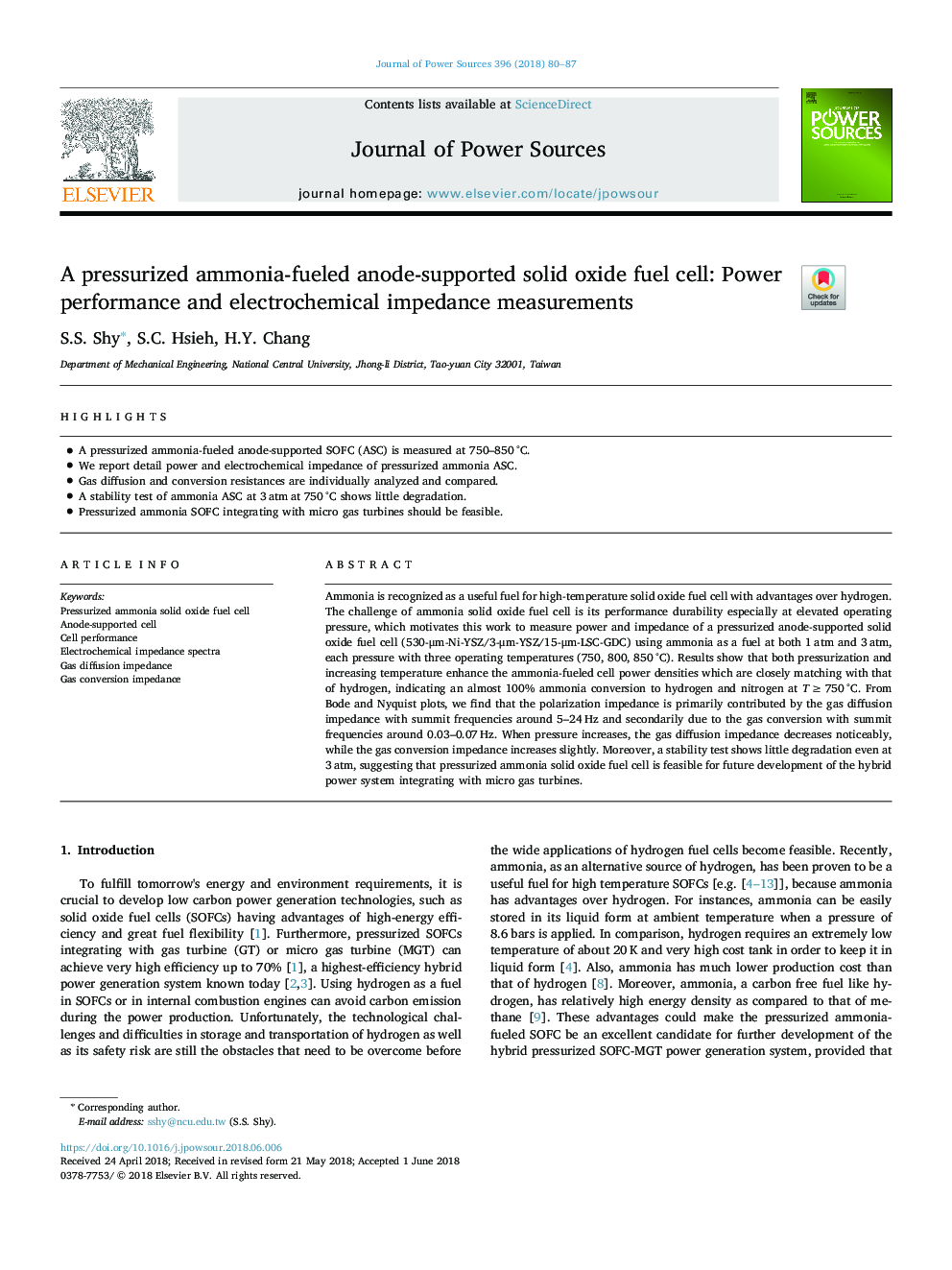| Article ID | Journal | Published Year | Pages | File Type |
|---|---|---|---|---|
| 7725046 | Journal of Power Sources | 2018 | 8 Pages |
Abstract
Ammonia is recognized as a useful fuel for high-temperature solid oxide fuel cell with advantages over hydrogen. The challenge of ammonia solid oxide fuel cell is its performance durability especially at elevated operating pressure, which motivates this work to measure power and impedance of a pressurized anode-supported solid oxide fuel cell (530-μm-Ni-YSZ/3-μm-YSZ/15-μm-LSC-GDC) using ammonia as a fuel at both 1â¯atm and 3â¯atm, each pressure with three operating temperatures (750, 800, 850â¯Â°C). Results show that both pressurization and increasing temperature enhance the ammonia-fueled cell power densities which are closely matching with that of hydrogen, indicating an almost 100% ammonia conversion to hydrogen and nitrogen at Tâ¯â¥â¯750â¯Â°C. From Bode and Nyquist plots, we find that the polarization impedance is primarily contributed by the gas diffusion impedance with summit frequencies around 5-24â¯Hz and secondarily due to the gas conversion with summit frequencies around 0.03-0.07â¯Hz. When pressure increases, the gas diffusion impedance decreases noticeably, while the gas conversion impedance increases slightly. Moreover, a stability test shows little degradation even at 3â¯atm, suggesting that pressurized ammonia solid oxide fuel cell is feasible for future development of the hybrid power system integrating with micro gas turbines.
Keywords
Related Topics
Physical Sciences and Engineering
Chemistry
Electrochemistry
Authors
S.S. Shy, S.C. Hsieh, H.Y. Chang,
